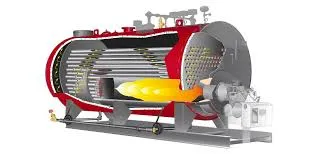
Nov . 24, 2024 23:16 Back to list
Optimizing Temperature and Pressure Control in Steam Boiler Systems for Enhanced Efficiency
Understanding Steam Boiler Temperature and Pressure A Comprehensive Guide
Steam boilers are crucial components in a variety of industries, including energy, manufacturing, and heating. They convert water into steam, harnessing the energy to perform work such as heating, powering turbines, or providing hot water. However, the efficiency and safety of steam boilers heavily depend on the interplay between temperature and pressure. In this article, we will explore how these two factors coexist in steam boilers, their significance, and the implications of their relationship for operational safety and efficiency.
The Basics Temperature and Pressure Relationship
At the heart of steam boiler operations lies the relationship between temperature and pressure. According to the principles of thermodynamics, when water is heated in a closed vessel, its temperature rises, usually transitioning from liquid to steam. The temperature of steam increases with added pressure; for instance, water boils at 100°C (212°F) at atmospheric pressure, but this boiling point escalates in a pressurized environment. For example, under a pressure of 2 bar, the boiling point rises to 120°C (248°F).
This relationship is described by the steam tables, which provide crucial data about the properties of water and steam at various temperatures and pressures. Understanding these tables is vital for anyone operating or maintaining a steam boiler, as they can predict boiling points, enthalpy, and other essential variables.
The Importance of Monitoring Temperature and Pressure
Maintaining the correct temperature and pressure within a steam boiler is critical for several reasons
steam boiler temperature and pressure

1. Operational Efficiency Optimal temperature and pressure ensure that the boiler operates at peak efficiency. If the steam is produced at the correct pressure and temperature, it can perform work more effectively and consume less fuel. Conversely, a lower pressure or temperature may lead to incomplete combustion, increased fuel consumption, and a reduction in overall system efficiency.
2. Safety Concerns High pressure and temperature conditions pose significant risks if not controlled appropriately. Over-pressurization can lead to catastrophic failures, including explosions. Regular monitoring of pressure and temperature is essential to prevent such incidents. Safety valves, pressure gauges, and temperature sensors are standard installations to ensure that these parameters remain within safe limits.
3. Quality of Steam The quality of the steam produced is also closely linked to temperature and pressure. High-pressure steam is usually drier than low-pressure steam, which is crucial for many applications, such as in turbine operations where wet steam can lead to blade erosion. Thus, maintaining the correct pressure can enhance steam quality significantly.
4. Maintenance Regime Regular checks on boiler pressure and temperature can signal the need for maintenance before a failure occurs. Deviations from normal operating conditions could indicate issues such as scaling, corrosion, or malfunctioning components. Early detection through careful monitoring not only enhances safety but also extends the life of the boiler system.
Conclusion
In conclusion, understanding and managing the temperature and pressure in a steam boiler is fundamental for its safe and efficient operation. The relationship between these two factors affects the overall efficiency, quality, and safety of the steam produced. Therefore, operators must be well-versed in the principles governing these relationships and employ rigorous monitoring and maintenance practices.
As industries continue to evolve and demand more efficient heating solutions, the role of steam boilers remains pivotal. With advancements in technology, including automation and smarter monitoring systems, the operation of steam boilers can be optimized further, ensuring that they meet the demands of modern applications while prioritizing safety and efficiency. Ensuring knowledge about steam boiler operations will empower operators and engineers alike to harness the full potential of these essential systems, contributing significantly to industrial progress and sustainability.
-
High-Efficiency Commercial Oil Fired Steam Boiler for Industry
NewsJul.30,2025
-
High-Efficiency Biomass Fired Thermal Oil Boiler Solutions
NewsJul.30,2025
-
High Efficiency Gas Fired Thermal Oil Boiler for Industrial Heating
NewsJul.29,2025
-
High-Efficiency Gas Fired Hot Water Boiler for Sale – Reliable & Affordable
NewsJul.29,2025
-
High Efficiency Biomass Fired Hot Water Boiler for Industrial and Commercial Use
NewsJul.29,2025
-
High-Efficiency Biomass Fired Hot Water Boiler for Industrial Use
NewsJul.28,2025
Related PRODUCTS






















